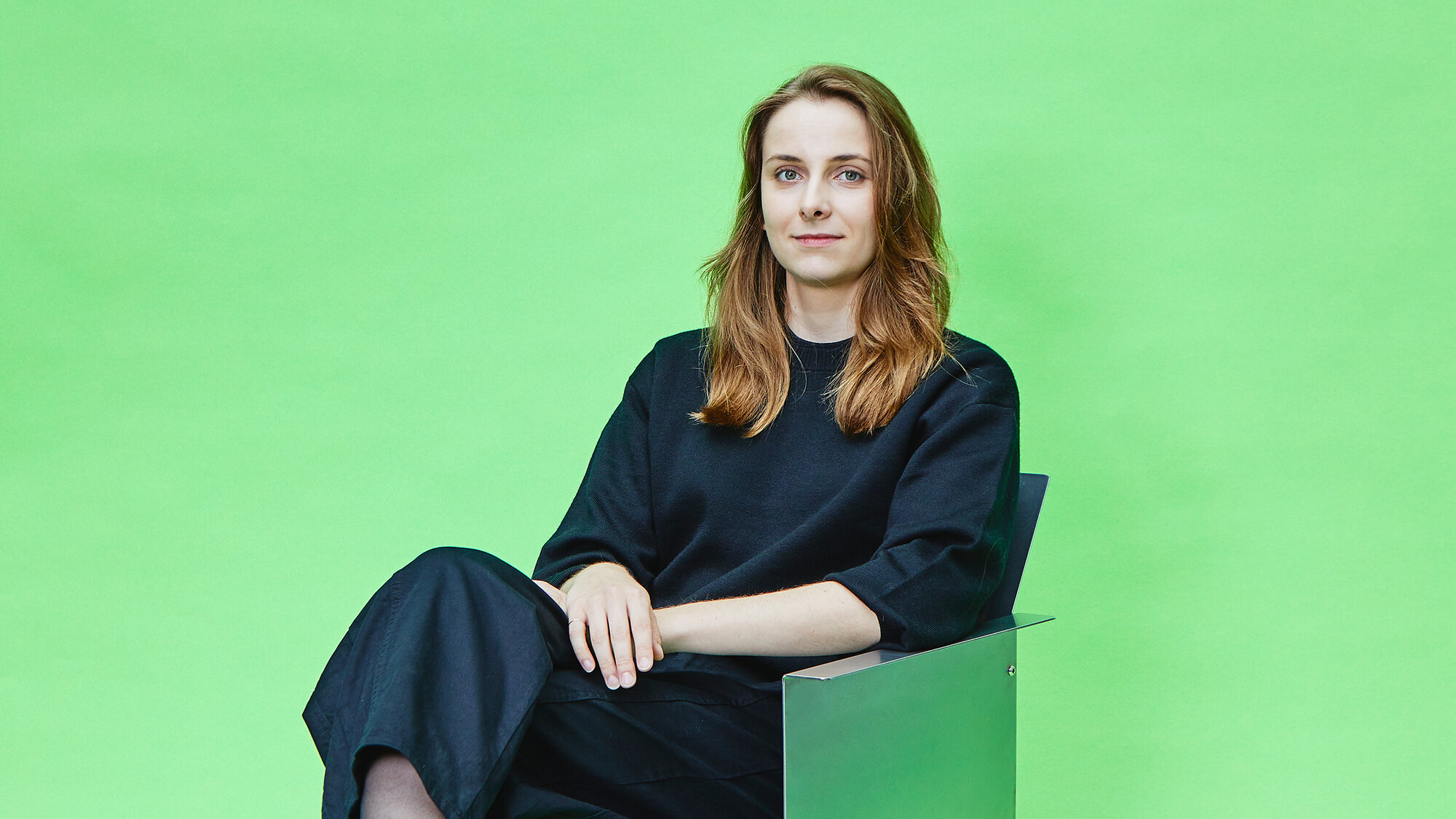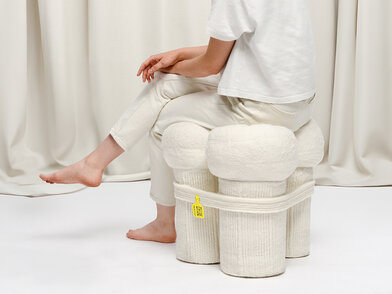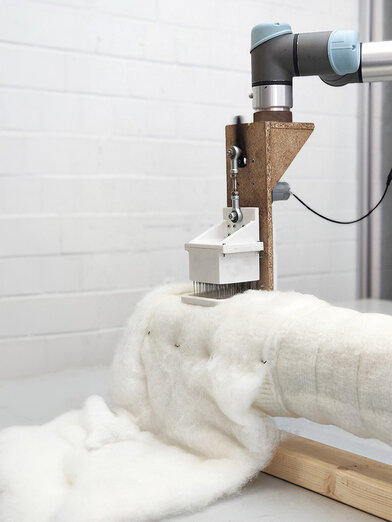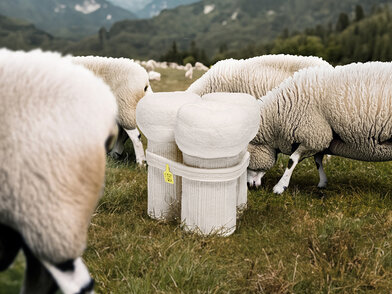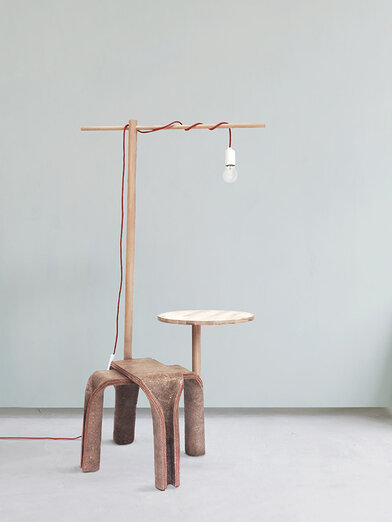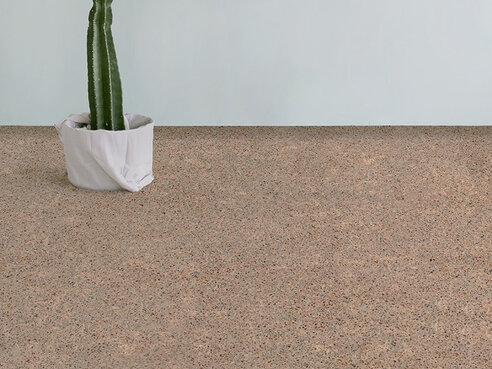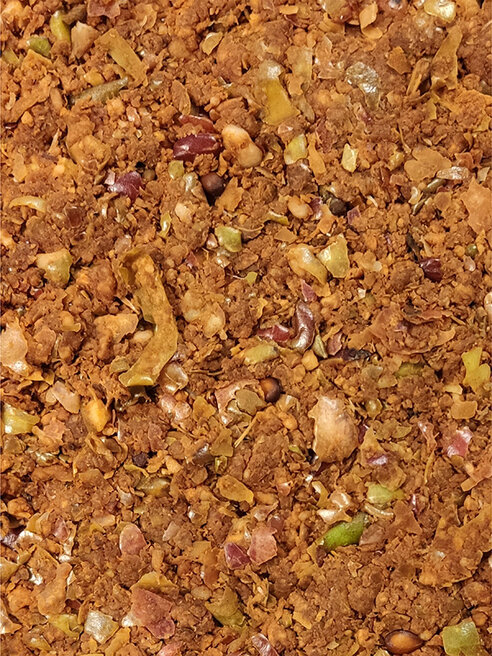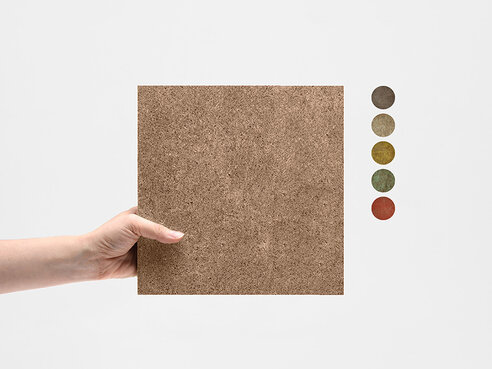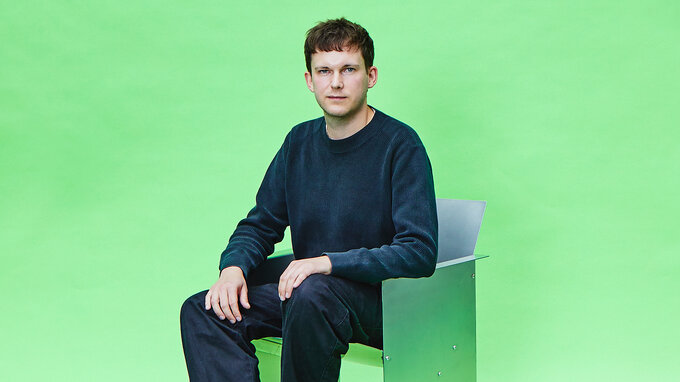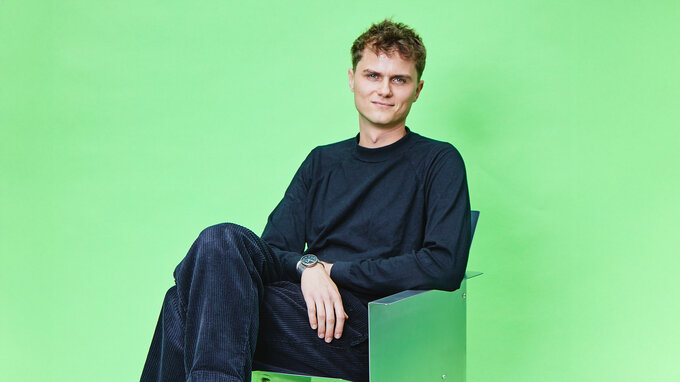Mareen Baumeister

Between high-tech and craftmanship – Interview with Mareen Baumeister
Mareen Baumeister from the Weißensee Academy of Art moves multidisciplinarily between the worlds of ecology, craftsmanship and technology. With a journalist's thirst for knowledge, she explores how materials themselves can become active agents of design. Her goal is to shape material intelligence and use it to develop new perspectives for sustainable design. In her projects FRUMO and FLOCK, she transforms organic waste materials into novel materials. In doing so, she combines traditional craftsmanship with digital technologies such as robotics and machine manufacturing. The new manufacturing processes that emerge in this way combine ecological, social and cultural responsibility. Mareen Baumeister has already received numerous awards for this approach, most recently convincing the jury of the German Design Awards 2026. She is one of the five finalists in the Newcomer Competition.
Mreen, what fascinates you about continuing to work with existing materials and resources?
I am drawn to the tension between history and possibility. Existing materials are archives of knowledge, revealing how systems function – and where they fail. Design becomes relevant to me when this knowledge can be translated into new contexts. I do not seek novelty, but the untapped potential within what already exists. When wool becomes a burden or food waste is treated as rubbish, it is not a technical but a systemic problem. This is where design can intervene: by revealing hidden potential and reintegrating materials into circular systems.
How do you connect craftmanship with digital or robotic processes?
To me craftsmanship is embodied knowledge of material – an intelligence that emerges through making. This knowledge often risks being lost when materials lose their perceived value. I am therefore interested in how craft principles can be translated into technological approaches. In FLOCK, for example, I explored old felting techniques and transferred them into a robotic process: the robot replicates the movement of the felting needle – precise yet adaptable – creating varying degrees of density. Digital technology makes it possible to fine-tune the relationship between material and tool, revealing new qualities in the process. The result is a form of design in which tradition and technology enrich one another.
What role does experimentation play in your design process?
Experimentation is one of my central methods. It means listening to the material, which often determines the direction itself. My research is systemic, yet always open to coincidence and deviation. Experimentation inevitably involves the possibility of failure – and with it, a moment of learning. In FRUMO one of my prototypes broke. From this accident came the idea to reheat it – revealing the material’s malleability and self-healing properties, which have since become central to its identity.
What does responsible use of material mean to you?
A responsible approach to material begins with observing and understanding its qualities and limitations. Attentiveness to individual materials forms the basis for a broader understanding of social and economic interconnections. Once these relationships are recognised, responsibility lies in making design decisions with them in mind. In practice, this means maintaining material cycles while exploring the diversity within a single substance. I seek transformability within one material rather than creating complexity through many.
How can design help rethink production and value systems?
I understand design as a form of mediation. It can connect knowledge from different disciplines and foster synergy. It can reveal structures and reconfigure them. In this sense, design is not the end of a process chain but its beginning – a tool that can shape systems to act regeneratively and generate values that sustain in the long term.

